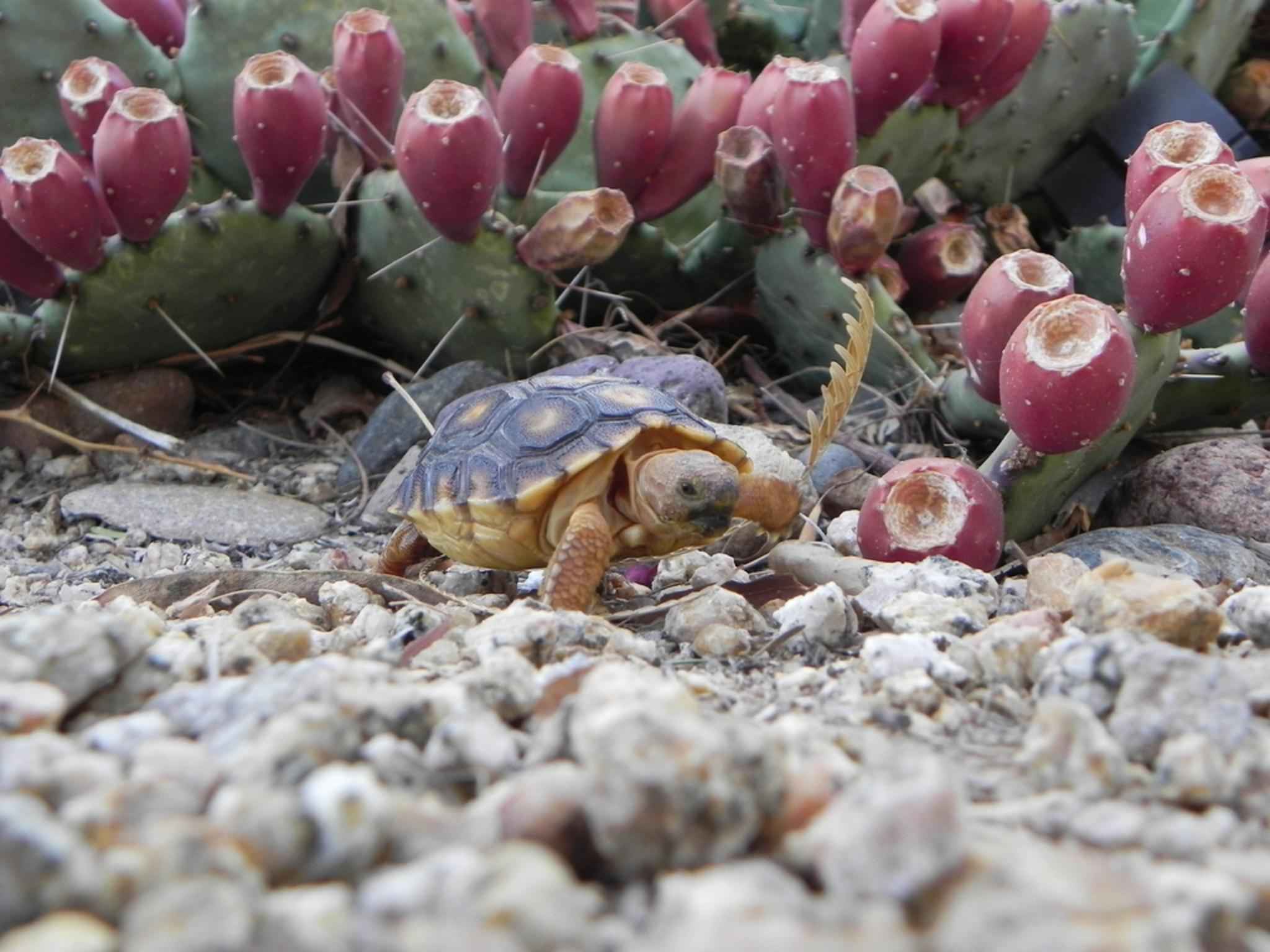(NEWS RELEASE)
Finding represents best science, federal agencies and Arizona collaborating to conserve species
After reviewing the best available scientific and commercial information, the U.S. Fish and Wildlife Service (Service) finds that the Sonoran desert tortoise does not face the threat of extinction and will be removed from the Endangered Species Act (ESA) candidate list. The finding is due in part to long-term commitments to continued proactive efforts between federal agencies and Arizona Game and Fish Department, in identifying and addressing the primary threats to the tortoise. The Service utilized a robust scientific analysis of the desert tortoise status and current and future threats and concluded it does not face extinction now or in the foreseeable future.

Organizations coming together to protect the tortoise include the state of Arizona (the only U.S. state in the species’ range), Bureau of Land Management, Department of Defense, and National Park Service. Together, stakeholders protect an estimated 73% of potential habitat for the tortoise, with 55% of that protected by interagency agreements committing federal land managers to continuing conservation efforts.
“Our Species Status Assessment, a tool we did not have previously, showed that our federal land-management partners have been managing this species for more than 30 years, and doing it well,” said Steve Spangle, Arizona field supervisor for the Service. “With this track record, we are confident that the tortoise will continue to thrive. When we can conserve species without listing under the ESA, everybody wins, including the tortoise.”
In evaluating the status of the Sonoran desert tortoise, the Service collaborated with experts from public and private sectors to complete a comprehensive status assessment that included advanced geospatial and population viability modeling and forecasting of the current and future threats to the tortoise. The review identified six primary threats: 1) altered plant communities; 2) altered fire regimes; 3) habitat conversion of native vegetation to developed landscapes (for agriculture, residential, etcetera); 4) habitat fragmentation; 5) human-tortoise interactions; and 6) climate change. Varying combinations of the severity of these threats were projected over the next 100 years and evaluated.
In 2010 the Service determined that listing the tortoise was warranted. However, the more in-depth the status review employed today showed that there are presently 470,000 to 970,000 adult desert tortoises rangewide on approximately 38,000 square miles (24 million acres, 9.8 million hectares) of potential tortoise habitat (64% in the U.S. and 36% in Mexico). The tortoise has not experienced any significant reduction in its overall range and past population losses are presumed to be limited to urbanization in historical tortoise habitat. Of Arizona’s 1,279 square miles currently designated as urban, not more than five percent was potential tortoise habitat.
The Sonoran desert tortoise will continue to receive state protections as a “Species of Greatest Conservation Need” by the state of Arizona, and is listed under the Mexican equivalent to the Endangered Species Act as threatened. The collection of wild Sonoran desert tortoises in the United States remains prohibited.
The Sonoran desert tortoise occupies portions of western, northwestern, and southern Arizona in the United States, and the northern two-thirds of the Mexican state of Sonora. The species is most often associated with rocky, steep slopes and bajadas (a broad slope extending from the base of a mountain range out into a basin) in both Mojave and Sonoran Desert scrub habitat. Records also indicate Sonoran Desert tortoises in Madrean evergreen woodland, semi-desert grassland, interior chaparral, plains of Sonora, and Sinaloan thornscrub communities of Arizona. The Sonoran desert tortoise is now recognized as a distinct species from the Mojave desert tortoise, which has been listed under the ESA as threatened since 1989.
Today’s finding, the Species Status Assessment, Candidate Conservation Agreements, images, and other information about the desert tortoise are available at http://www.fws.gov/southwest/es/arizona/. Information regarding the status and conservation of, and any potential threat to, the Sonoran desert tortoise should be submitted by mail to Field Supervisor, Arizona Ecological Services Office, 2321 West Royal Palm Road, Suite 103, Phoenix, AZ 85021–4951
America’s fish, wildlife and plant resources belong to all of us, and ensuring the health of imperiled or at-risk species is a shared responsibility. We’re working to actively engage conservation partners and the public in the search for improved and innovative ways to conserve and recover imperiled species, as well as keep common species, common. To learn more about the Endangered Species program, go to http://www.fws.gov/endangered/.
Rose Law Group President and Founder Jordan Rose comments:
“The positive results that this decision will have on the Arizona economy cannot be overstated. If the tortoise would have been granted endangered status more than half of all State Land, as well as more than half of the undeveloped private land in the West Valley and throughout Pinal County, would have suddenly become undevelopeable. I am sure we will see some litigation surrounding the decision, but the real estate industry should be celebrating today.”











